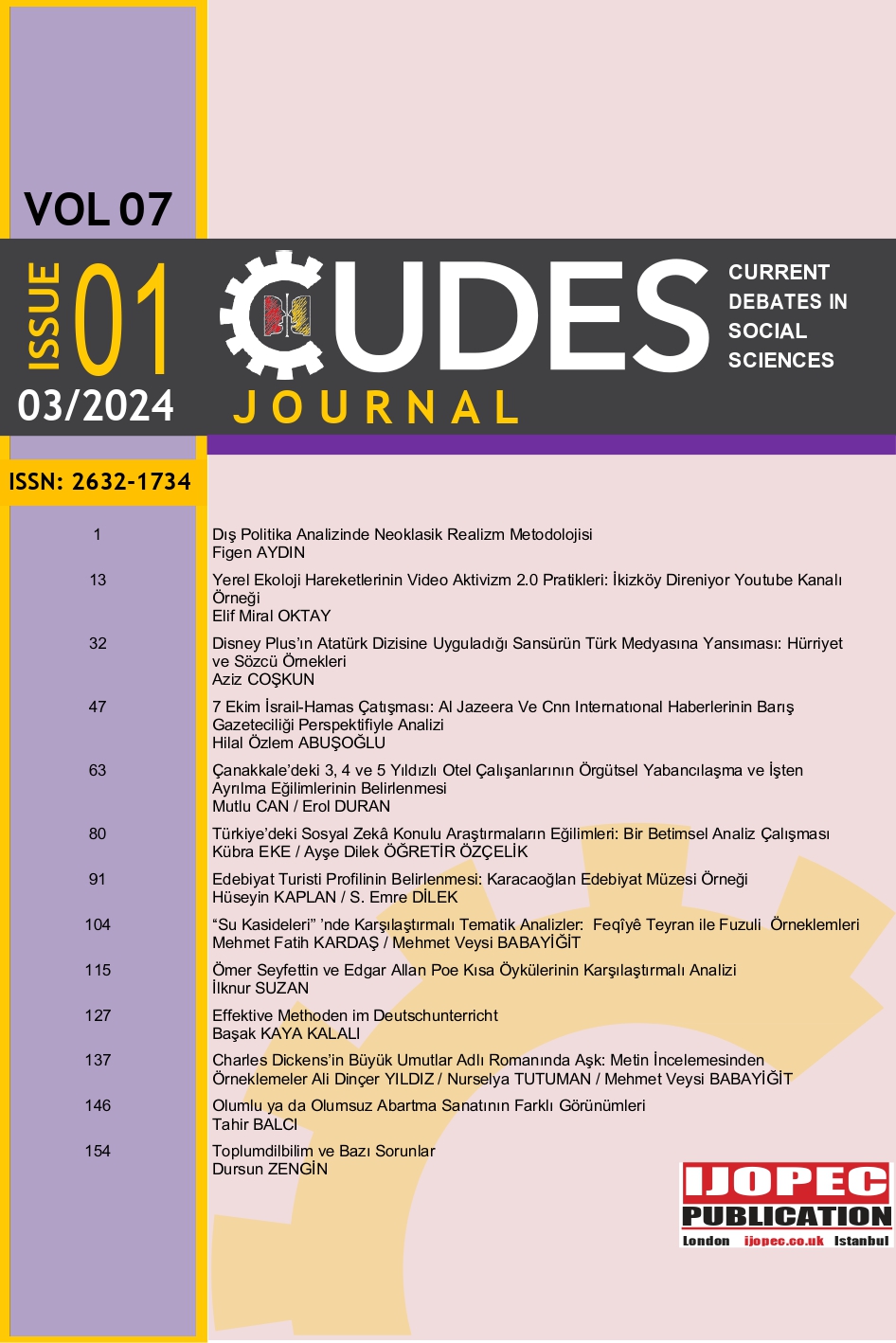Author :
Abstract
Bilgi olmadan fikir sahibi olunamaz” sözü, bilginin insan hayatında ne kadar önemli olduğunu gösterir. Ancak bilginin başkalarına ne zaman, nerede, niçin ve nasıl aktaracağı konusu da son derece önemlidir. Hatta bilginin aktarılma tarzı diğer unsurların tümünün önüne geçebilir. “Nasıl?” sorusuna yanıt vermek bir sanat işidir. Dolayısıyla söz sanatları tarih boyunca filozofları, saraylıları, politikacıları ve bilim insanlarını meşgul etmiştir. Abartma, anlatıma güç katan, inandırıcılık derecesini yükselten bir söz sanatıdır. Ancak abartmaların çoğunda mantık görmek olanaksızdır. Zira abartmada aklın sınırlarını zorlamak ve şaşırtmak temel ilkedir. Abartmanın önemli kısmı inandırıcı olmadığına göre aynı ölçüde yalan içermektedir. Bu yalanlar kışkırtıcı ve yıkıcı olabildiği gibi kimseye zarar vermeyen ve söyleyeni / dinleyeni mutlu eden yalanlar da olabilir. Abartmada bulunurken en çok yararlandığımız söz sanatı benzetme ve karşılaştırmadır. “Şeker gibi karpuz” derken karpuzun tadını şekerin tadına benzetiriz; “deve gibi adam” derken bir kişinin boy pos bakımından normalin üstünde olması nedeniyle deveyle karşılaştırırız; “baldan tatlı dil” derken mecazdan faydalanıyoruz. Üstkavram olan abartma, değer artırma ya da değer küçültme işlevi gören bir söz sanatıdır. Değer küçültme de kendi arasında değerlileştirme ve değersizleştirme olmak üzere ikiye ayrılır. Yani küçültme sanatı olumlu ve olumsuz olmak üzere iki yönlüdür. Sözel anlamda değerini aşağı çekmek suretiyle söylemine ve eylemine alçakgönüllülük, cömertlik, onay, incelik, uzlaşma ve sıcakkanlılık katarak nezaket çerçevesinde kalmak, olumlu anlamda değer küçültmedir, yani değerlileştirmedir.
Keywords
Abstract
The proverb "You cannot have an opinion without knowledge" shows how important knowledge is in human life. However, when, where, why and how to transfer knowledge to others is also extremely important. In fact, the way of transferring knowledge may even override all other elements. Answering the question "How?" is a work of art. Therefore, the art of rhetoric has occupied philosophers, courtiers, politicians and scientists throughout history. Exaggeration is a verbal art that adds strength to the narrative and increases the degree of credibility. However, it is impossible to see logic in most exaggerations. Because the basic principle of exaggeration is to push the limits of reason and to surprise. Since a significant part of exaggeration is not convincing, it contains lies to the same extent. These lies can be provocative and destructive, or they can be lies that harm no one and make the teller/listener happy. The most frequently used figures of speech in exaggeration are simile and comparison. When we say "watermelon like sugar", we compare the taste of watermelon to the taste of sugar; when we say "man like a camel", we compare a person to a camel because he is above normal height and stature; when we say "tongue sweeter than honey", we make use of metaphor. Hyperbole, which is a metaphor, is a figure of speech that functions either to increase or decrease value. Depreciation is also divided into two categories: positive depreciation and negative depreciation). In other words, the art of minimisation is two-way, positive and negative. To remain within the framework of courtesy by adding humility, generosity, approval, kindness, tact, compromise and friendliness to one's speech and action by lowering one's value in the verbal sense is positive undervaluation, i.e. valorisation.





